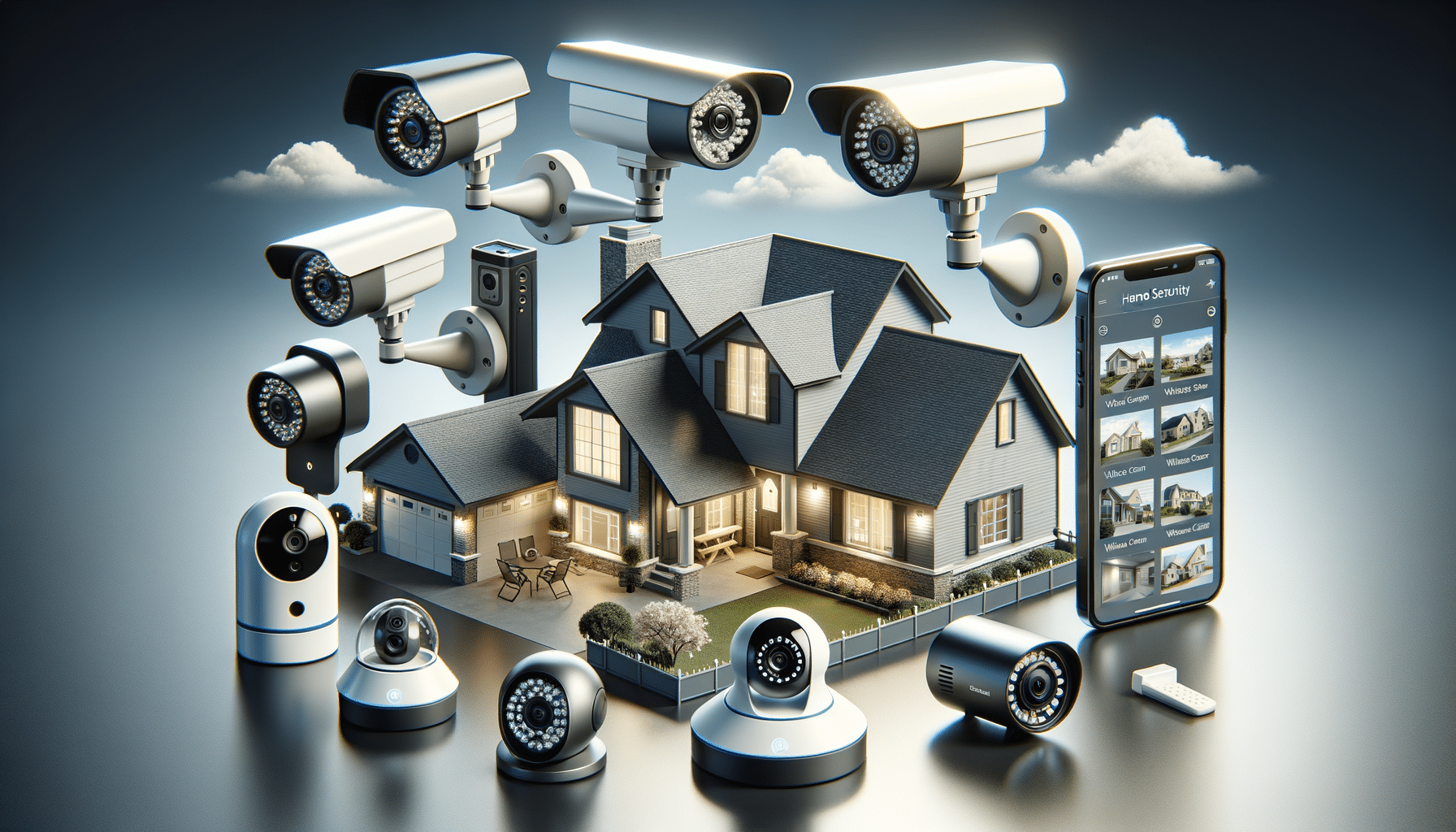
Incredible Home Security Cameras in the U.S
Understanding Home Security Cameras
Home security cameras have become an essential part of modern living, offering peace of mind and security. These devices serve as vigilant guardians, constantly monitoring your property and providing real-time alerts in case of any unusual activity. They come in various shapes and sizes, each with its own set of features tailored to different needs. From simple indoor cameras to sophisticated outdoor systems with night vision and motion detection, the range is vast.
Security cameras work by capturing video footage, which can be stored locally or in the cloud. This footage can be accessed via a smartphone, tablet, or computer, enabling homeowners to keep an eye on their property from virtually anywhere. Some advanced models even offer features like two-way audio, allowing you to communicate with someone at your door, or facial recognition, which can differentiate between family members and strangers.
The importance of home security cameras cannot be overstated. They not only deter potential intruders but also provide valuable evidence in the event of a break-in. Additionally, they can be used for more mundane purposes, such as checking in on pets or monitoring package deliveries. As technology continues to evolve, the capabilities of these cameras are expanding, making them an indispensable tool for home security.
How to View a Security Camera From Anywhere
One of the most appealing features of modern security cameras is the ability to view footage remotely. This capability allows homeowners to monitor their property in real-time, no matter where they are in the world. To achieve this, most security cameras connect to the internet, either via Wi-Fi or a wired connection. Once connected, the camera can stream video footage to a dedicated app or web portal.
Setting up remote viewing is generally straightforward. First, ensure that your camera is connected to your home network. This usually involves downloading the manufacturer’s app and following a series of prompts to link the camera to your Wi-Fi. Once connected, you can access live video feeds through the app, which is typically available for both iOS and Android devices. Some cameras also offer web-based access, allowing you to view footage from a laptop or desktop computer.
Security is a crucial consideration when accessing your camera remotely. Ensure that your home network is secure by using a strong password and enabling encryption. Additionally, regularly update your camera’s firmware to protect against vulnerabilities. By taking these precautions, you can safely and conveniently monitor your home from anywhere.
Key Considerations Before Installing a Security Camera at Home
Before installing a security camera at home, there are several key factors to consider. First and foremost is the location. Determine the areas of your property that require surveillance, such as entry points, driveways, or backyards. This will help you decide the number and type of cameras needed. For outdoor areas, weather-resistant models with night vision capabilities are recommended.
Another important consideration is the method of storage for the video footage. Cameras typically offer local storage, cloud storage, or a combination of both. Local storage involves saving footage on a physical device, such as a microSD card, while cloud storage uploads footage to a remote server. Each option has its pros and cons; local storage is more secure from hacking, while cloud storage offers easier access and retrieval.
Privacy is another crucial aspect to consider. Ensure that your cameras are positioned in a way that respects the privacy of neighbors and visitors. Additionally, familiarize yourself with local laws regarding surveillance to ensure compliance. By carefully considering these factors, you can effectively enhance your home security while maintaining privacy and legality.
Choosing the Right Security Camera for Your Needs
With a plethora of options available, selecting the right security camera can be daunting. Start by assessing your specific needs. Are you looking for indoor monitoring, outdoor surveillance, or both? Do you need features like night vision, motion detection, or two-way audio? Understanding your requirements will help narrow down your choices.
Consider the camera’s resolution, as higher resolution provides clearer images, which can be crucial in identifying intruders. Additionally, examine the camera’s field of view; a wider field of view means fewer cameras are needed to cover a larger area. Connectivity options are also important; decide whether you prefer a wired or wireless setup based on your home’s infrastructure.
Lastly, factor in your budget. While it’s tempting to opt for the most feature-rich model, it’s essential to balance cost with functionality. Research and compare different models, read reviews, and consider seeking professional advice to ensure you make an informed decision. By taking these steps, you can choose a security camera that meets your needs and enhances your home’s safety.
Maintaining Your Home Security Camera System
Once your security camera system is installed, regular maintenance is essential to ensure its continued effectiveness. Start by checking the camera lenses for dirt or debris, which can obscure the footage. Clean them gently with a microfiber cloth to maintain clarity. Additionally, inspect the camera’s mountings and connections to ensure they are secure.
Regularly review the footage to ensure the cameras are capturing the desired areas and adjust their positioning if necessary. It’s also important to test the system’s features, such as motion detection and alerts, to confirm they are functioning correctly. If your system uses batteries, check and replace them as needed to avoid interruptions in surveillance.
Finally, keep the camera’s software and firmware up to date. Manufacturers often release updates to improve performance and security, so staying current is crucial. By performing these maintenance tasks, you can ensure your security camera system remains a reliable tool for protecting your home.


